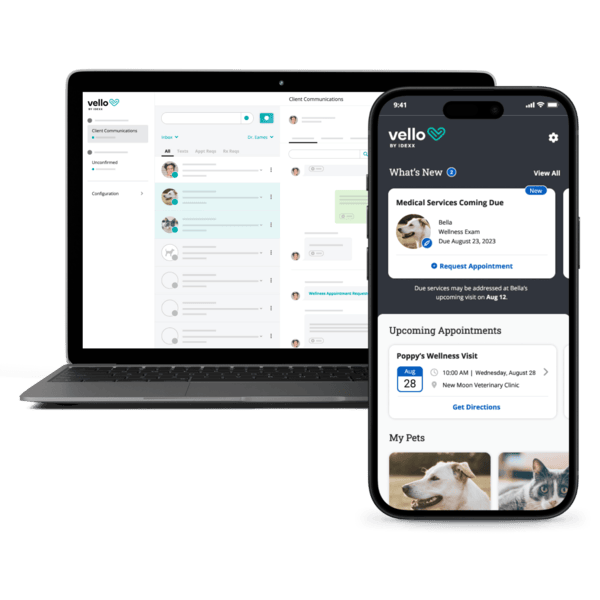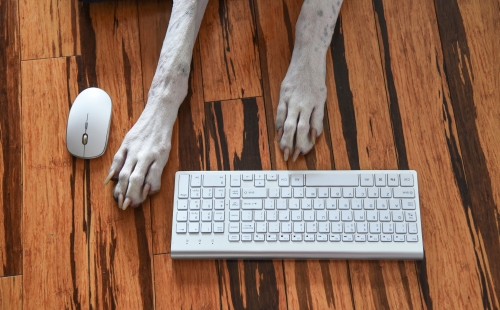How to Create an Effective Reminder System for Your Veterinary Clinic

Running a successful veterinary practice involves more than providing great medical care. You also must keep your schedule full and flowing smoothly. Missed appointments are one of the biggest disruptions to your team’s productivity and your clinic’s revenue, but a well-designed appointment reminder system can improve client communication, increase compliance, and significantly reduce no-shows. Keep reading to learn how to create an effective reminder system that works for your practice and clients.
Step 1: Choose the right tools
Before you can build a strong reminder system, you must choose the right technology. The best reminder systems work seamlessly with your practice management software (PMS) and allow for automated, multi-channel communication. Choosing the right platform ensures reminders go out on time and are tracked for delivery and response, and makes life easier for your front desk team. Considerations include:
- PMS integration — Ensure the platform you choose can integrate with your existing PMS. This allows your reminders to automatically pull client and appointment data in real time, eliminating manual entry and reducing the risk of errors or missed communications.
- Multi-channel communication — Pet owners have different communication preferences. Some may appreciate text reminders, while others prefer an email or app notification. Ask new clients their preferred communication method and include a section in your client portal to update this information as needed. You can also segment your clients by their preferences to improve open rates and responses.
- Automation — Automated reminders save your team hours each week and ensure appointments don’t slip through the cracks. Your system should send reminders based on appointment type and timing, adjust message content based on the patient, and trigger follow-up messages if a confirmation isn’t received.
Step 2: Time the reminder right
Sending your appointment reminders at the right time can dramatically increase effectiveness. If the reminder is too far in advance, your client may forget the appointment, but if messages are sent too close to the visit, they might not have time to rearrange their schedule if needed.
Here is a suggested appointment reminder schedule:
- Initial appointment reminder — Five to seven days before the appointment.
- Follow-up reminder — 24 to 48 hours prior to the visit
- Same-day reminder — Morning-of, especially for surgeries or first-time appointments
You should also adjust your timing based on the appointment type. For example, earlier reminders may be helpful for surgical procedures or lab work that require fasting.
Step 3: Keep appointment reminders clear and friendly
A well-crafted reminder should be concise, informative, and friendly. This message is often a client’s first touchpoint before their visit, so clarity and friendliness are important to encourage attendance and create a positive impression. The message should include:
- Pet’s name
- Appointment date and time
- Appointment location and contact information
- Preparation instructions (e.g., fasting, collecting a stool sample)
- A clear call to action (e.g., “Reply YES to confirm, NO to reschedule”)
Step 4: Include options to confirm, cancel, or reschedule
Clients are more likely to show up if they confirm their appointment. Provide an easy way to say yes or to reschedule, if necessary. Two-way texting or clickable links can make this process quick and convenient. By making it easy for clients to communicate changes, you open up those time slots for others, helping with no-show reduction and increasing efficiency.
Encourage clients to confirm a day or two before the appointment to avoid last-minute cancellations. If you haven’t received a response within a certain time frame, you can send a gentle nudge or give them a quick call.
Step 5: Track, analyze, and adjust your reminder system
Creating an effective reminder system doesn’t stop once it’s launched. To ensure your system continues to help with no-show reduction and improve client engagement, you must regularly track the system’s performance, analyze the results, and make the necessary adjustments.
Identify the key metrics that tell you how well your appointment reminder system is working. Important data points to monitor include:
- No-show rate — Track how many clients miss appointments without notice before and after you implement the system.
- Confirmation rate — Determine how many clients respond to appointment reminders and through which channels (e.g., text, email, app).
- Cancellations/rescheduling trends — Are reminders prompting more timely cancellations or reschedules, giving your team a better chance to fill empty slots?
- Response time — How quickly are clients confirming their appointments after receiving a reminder?
- Client satisfaction — Are clients expressing appreciation or frustration with your reminders? You can gather this information through surveys or conversations at check-in.
Based on your findings, make targeted adjustments to fine-tune your appointment reminder system.
An effective appointment reminder system is one of the easiest and most powerful tools for no-show reduction in your practice. By leveraging the right technology, personalizing your messages, and optimizing your timing, you can increase client satisfaction, improve patient outcomes, and maintain a steady, well-organized schedule.
Want more content like this?
Sign up for The Connected Practice Newsletter




